Wiki Contents
- Interface Explanation
- Getting Started with the Setup Wizard
- ASC Options to configure first
- Creating a cluster restart schedule
- Starting the Cluster
Interface Explanation
Cluster Overview
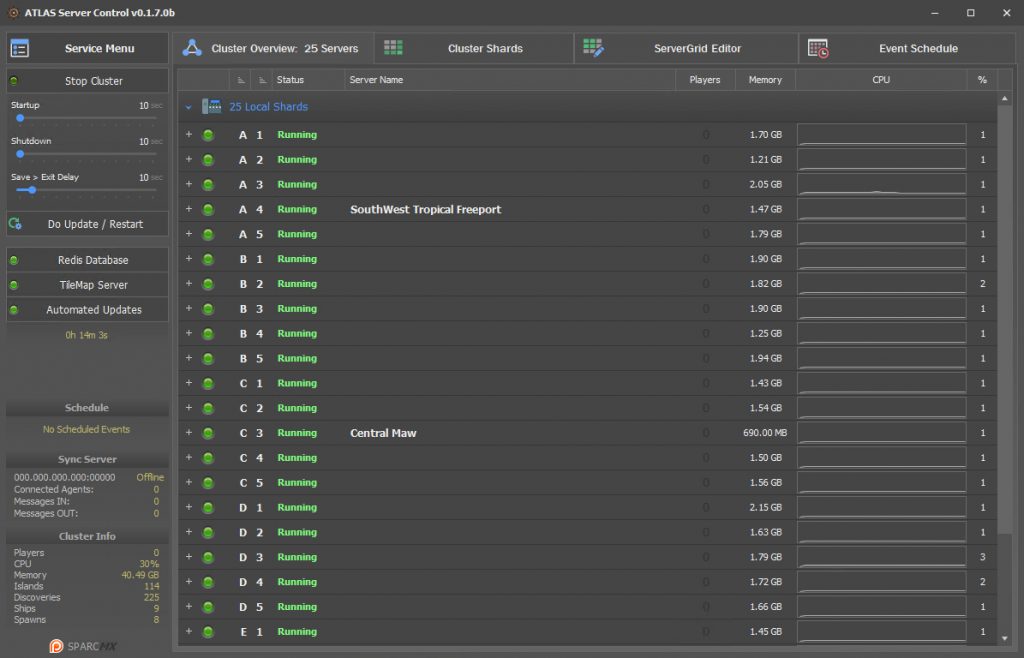
The overview lists all the shards configured on the cluster, remote or local. It provides at-a-glance information regarding the status, cpu, memory usage and player counts of each shard as well as totals for the cluster.
The status has the following displays;
- Offline: Shard is not running
- Booting: Shard is in the process of starting up
- Running: Shard has initialized and is running
- No RCON: Unable to communicate with the Shard via RCON
- Crashed: Shard has hard crashed without error
Shard Configuration
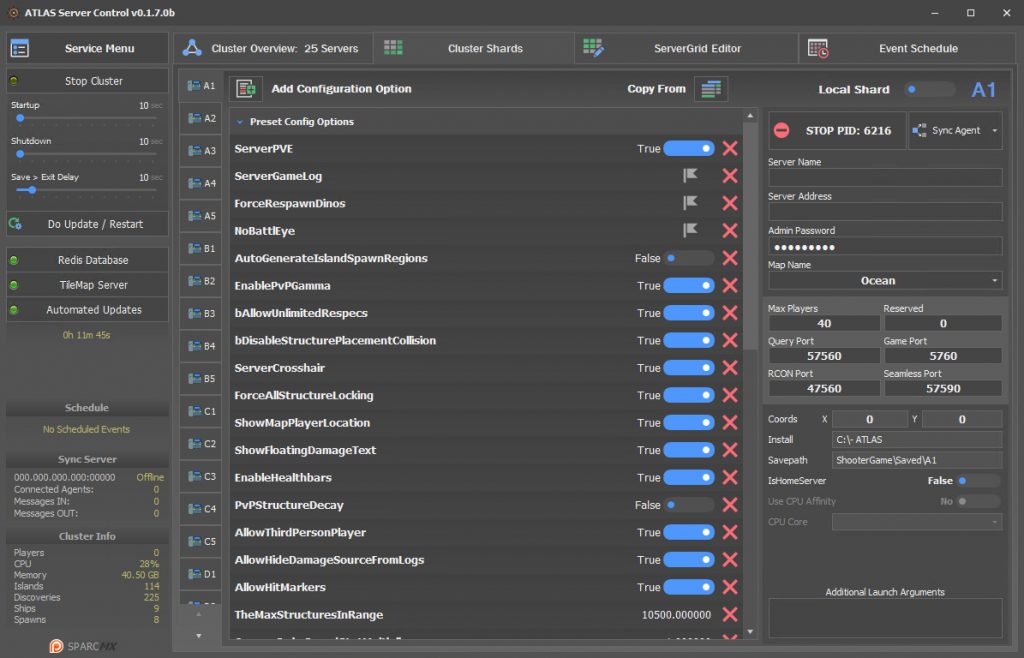
Each shard has a set of configured options that govern the way the Shard functions, these are stored in the Atlas installation folder. Settings from Game.ini, GameUserSettings.ini and ServerGrid.json are directly manipulated from this screen, adding additional settings can be done by clicking the “Add Configuration Option” button.
Large clusters can be time consuming when it comes to duplicating the configuration to each Shard, the “Copy From” button allows you to copy the settings from another Shard. Vital settings such as RCON port, Query etc will remain unique and untouched, only in-game related settings are copied.
The Shard can be started and stopped separately from the cluster which can be useful for testing or quick setting changes.
ASC will config crawl the server folder looking for anything that provides information about the Shard, it will then attempt to use this information to save you time. Config crawler is sensitive to existing installations and will always import before overwrite.
Server Grid Editor
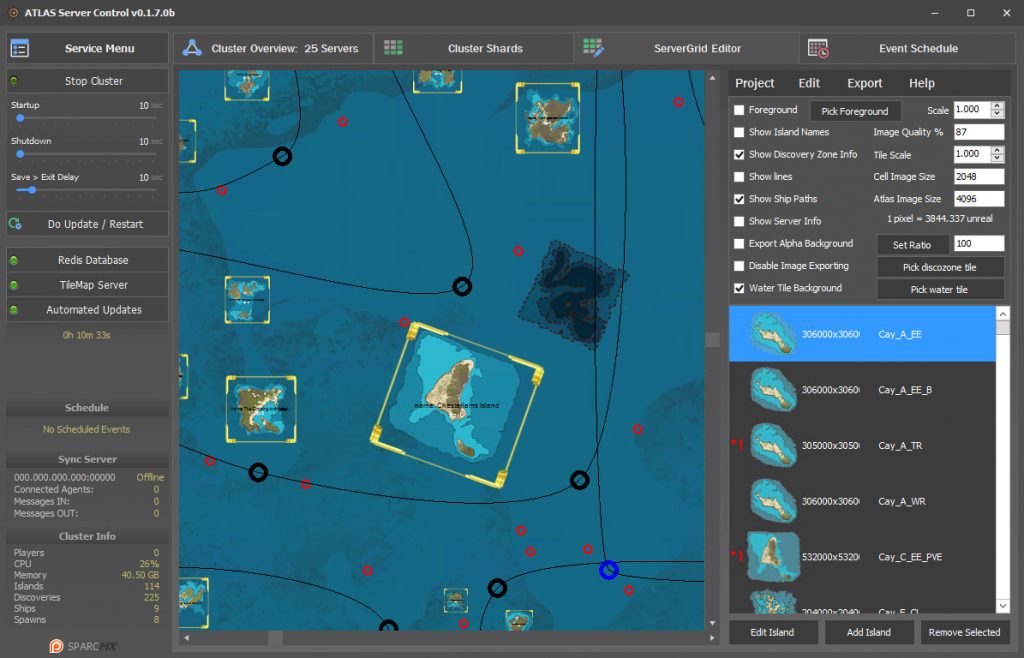
The Server Grid Editor (SGE) was developed by Grapeshot Games to assist with the development and testing of Atlas maps, its responsible for positioning of islands, defining Discovery areas, Ship paths and Quest generation among others.
The ASC version of SGE is 100% faithful to the original on GitHub with only a few code and interface changes to facilitate integration. Regarding instructions on how to use SGE, if one has not already been done, I’ll endeavor to create a how-to. For the most part, with ASC, you only need to worry about designing the map and not the myriad of configurable options available.
The main function (outside of creating a map) is exporting the required map images to the appropriate location, I think we’ve all been stumped by the “Fog of war” issue that plagues first time installers. ASC has got this down pat, so if you can’t see maps, it’s a Firewall problem, nothing else.
(Hint: You can leave your Firewall running on the zones: Public and Private, disable it for Domain)
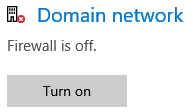
Event Schedule
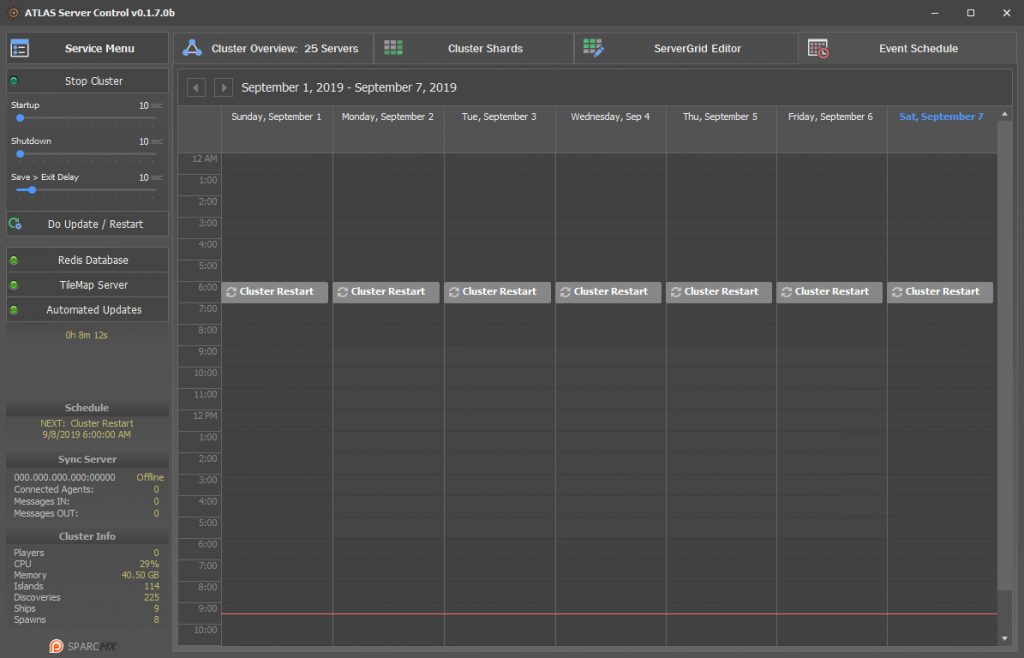
The Event Schedule is still a work-in-progress, basic functionality for the “Restart Event” is complete and working, the “RCON Command” function still needs work. The “Restart Event” will check for an update prior to restarting the Shards.
I’ve used a traditional Calendar control for this feature so options such as Recurrence patterns, Drag and drop and Reminders are possible. It also stores it’s data in .vcs format which can be imported by Outlook and other popular Calendar applications (Even a live link).
The red line represents the current time. (Think Piano Forte)
< Back





